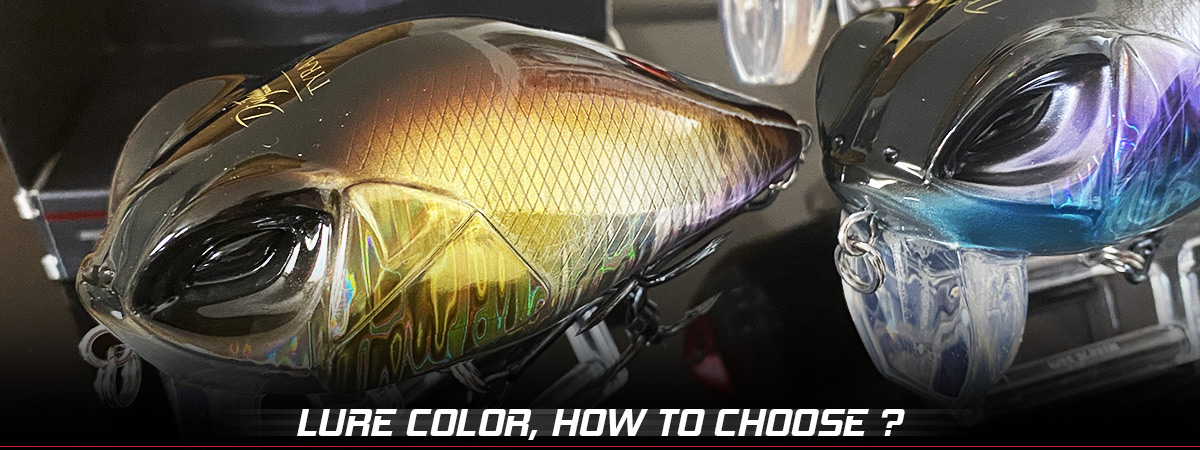
Manufacturers are doing an amazing job at producing a great assortment of lure color. They claim to do it to help anglers catch more fish and match their need for intricate patterns. But is that really helpful? Isn’t it making things more confusing? Just walk into any tackle shop and look at the color selection. So let’s try to make sense of it, by looking at basic rules of physics as well as fishing experience.
The first thing to consider when trying to understand how color works is to remember that color is a function of light. And light doesn’t travel very well in water, at least compared with air. It means that past a certain depth, colors simply don’t exist. That depth depends on many factors, the first is light conditions above the surface: season of the year, time of day, presence of cloud or rain. There’s more light at noon in the summer on a sunny day than on a morning winter rainy day.
Secondly, it will depend on water clarity and color. Clearwater filters out light very effectively. The stunning colors of the many life forms in a coral reef are visible only because divers use very powerful lighting equipment. And that’s in crystal clear water with a tropical sun over them. Even in moderately stained water in Europe, the light penetration is only a fraction of that.
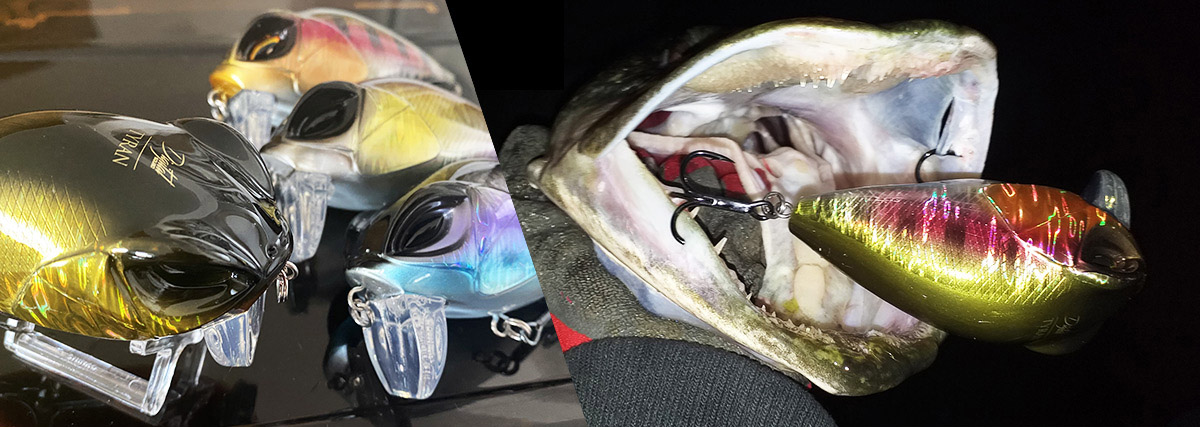
Because light doesn’t penetrate, and colors don’t exist, doesn’t mean that fish see all the bait colors as identical. In essence, they see in black and white. To have some idea of how that translates to lures, just take a picture of your lures with the black and white feature of your camera.
Then the question becomes how visible is my lure? The idea behind lure fishing, in general, is to make the lure visible enough to be seen and found by game fish. But not too much and not scream fake to the fish. So it’s a balance that changes with every body of water and water conditions.
In super clear water we already know that natural colors are the best. That means a lure that looks like a baitfish. For hard baits, it is better to select lures with transparent bodies and painted back. Even in crystal clear water, there’s always a dominant color. It can be due to dissolved minerals or vegetation or bottom composition. It will usually be either green or blue. Make sure you pick a lure that has a painted back and dominant color that matches the environment.
In low light conditions such as rainy days or twilight morning and evening, you might want a little more solid colors, such as holographic or foil and mirror paint schemes. These patterns are great because they offer a solid silhouette but reflect ambient light and color conditions for a perfect match.
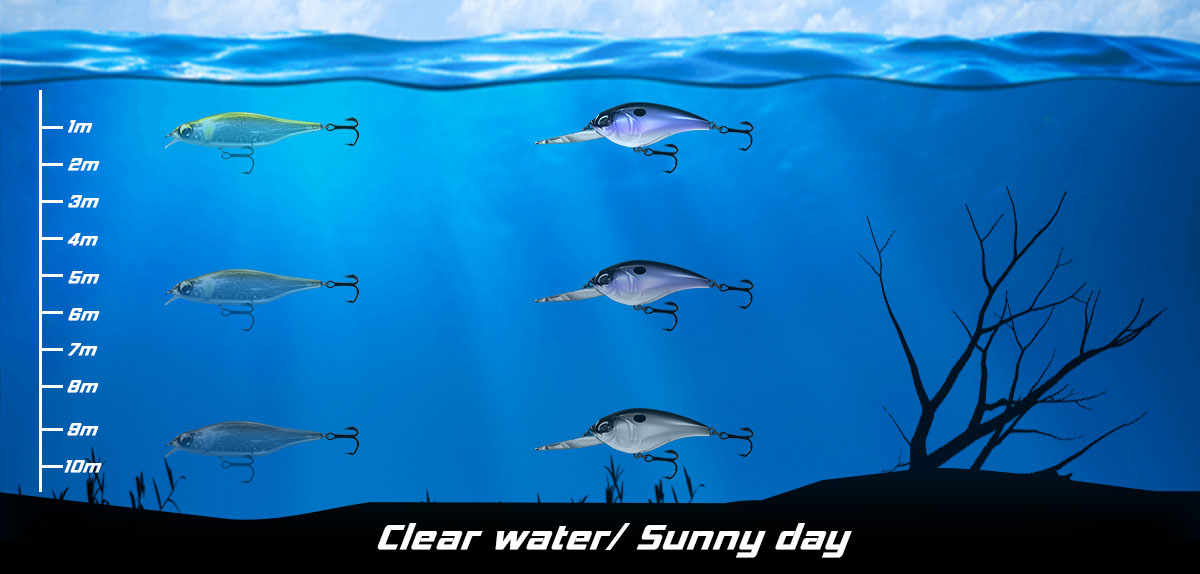
Many lakes have overall clear water but are clouded with a lot of suspended matters. It can be minerals, giving a whitish milky color; chlorophyllic with a greenish tint or hummus and tannic giving a dark color to the water. Again the goal is to make the lure look like it belongs there.
In whitish water, I will select a solid white lure. It can have a few subtle accents such as a very subdued sexy shad but keeping the overall dominant color white. For greenish water, you guessed it green lures but also yellow or a combination of both. In dark-colored tannic water, the best hues are red, orange, and yellow. Red lures in particular seem to stand out!
It’s hard to give a good definition of stained water other than it’s somewhere between clear and muddy water. It’s also the easiest and most common condition in freshwater. The right color will depend on the time of year, weather, and main forage. For many lures, the old white chartreuse will be just fine. I would call that exaggerated natural, so keeping with the dark back light side baitfish pattern. For shallow running lures like square bill crankbaits and jerkbaits I would go with sexy shad or similar colors. For deeper lures, such as deep-diving crankbait nothing beats citrus shad or blue back chartreuse color.
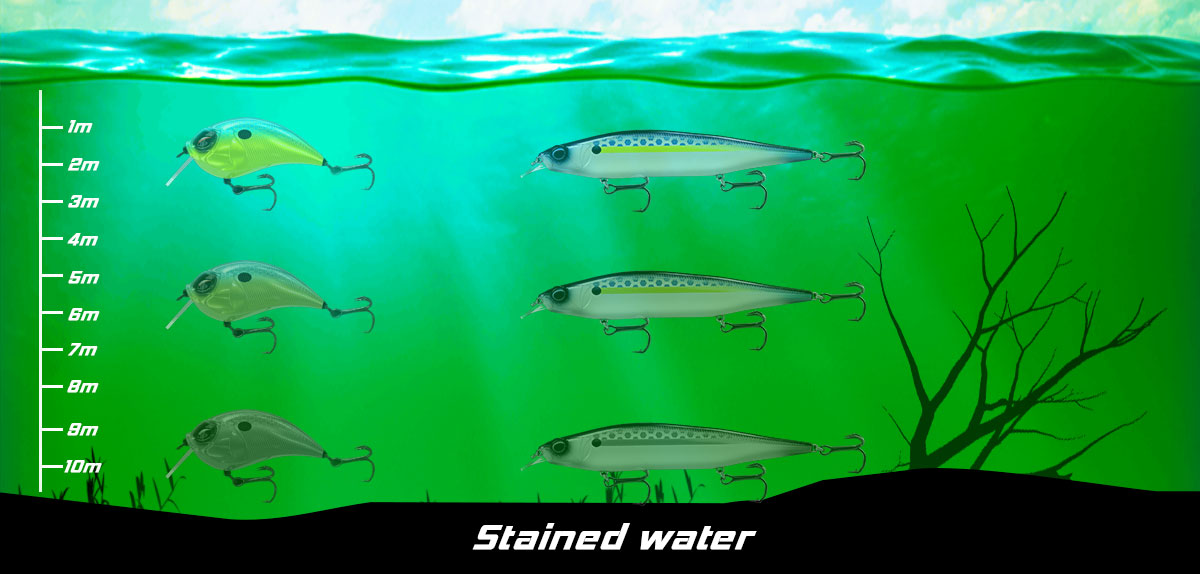
There are two ways to go about color selection in muddy water. The first is to go all out on bright and flashy colors: fluorescent chartreuse, peacock, or the old fashion fire tiger. This is a good strategy in dirty water on bright sunny days. Some light will penetrate and activate colors, fluorescent colors in particular.
The other alternative is to go with dark-colored fishing lures. The idea is that a dark lure will be the best to contrast with the background and will be the most visible. So in this case, all black, black and blue or any dark color will be the best choice. It is not always easy to find but by and large, black is often a good yet overlooked color.
The above paragraphs were mostly geared toward hard baits such as crankbaits and jerkbaits. The general principle applies to soft baits. Every potential prey is doing everything possible to camouflage itself to hide. Therefore it makes sense for the angler to do the same with his lure. But again, you want to be camouflaged but do a poor job at it and be found. So your lure needs to be somewhat of a similar color to the bottom.
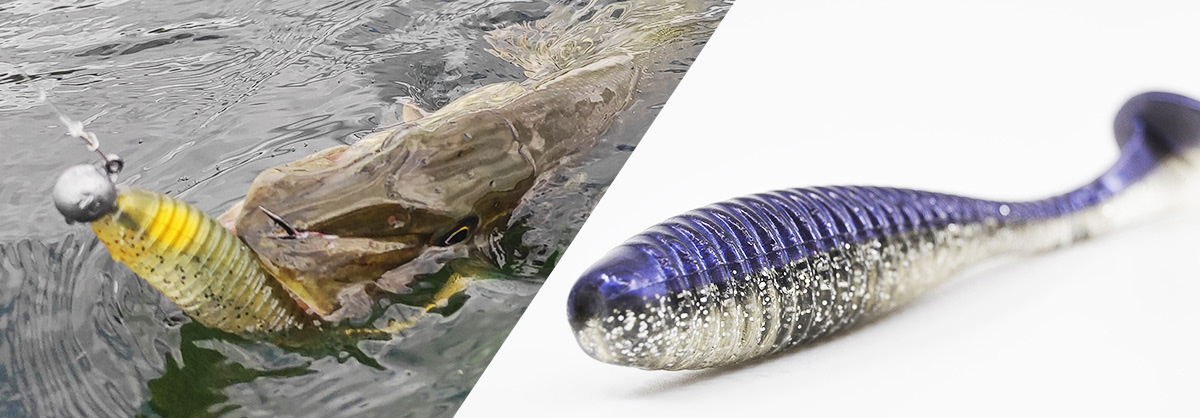
If your lure doesn’t match perfectly, don’t worry too much. First, as we already said, light filtration by the water means fewer colors are visible underwater, and fish do not have the ability to see colors as well as we do. That’s why green pumpkin is such a good all-around color that works in just about every environment and not just for bass fishing. For extra visibility in stained or low light conditions, add just a touch of bright color with chartreuse dye or a permanent marker.
In muddy water, for baitfish imitation go with plain white with fluorescent accents, and for crawfish pattern stick to the tried and true black and blue.
The classical bright color for dirty water and natural color for clear water is still true and the best guideline. Regardless, you can rely on your intuition and experience. Some colors will “look wrong” in the water and its something the angler needs to recognize because the fish will.